-
 Art of Wellness Acupuncture & Traditional Chinese Medicine (TCM)11704 Wilshire Blvd, Suite 295, Los Angeles, CA, 90025
Art of Wellness Acupuncture & Traditional Chinese Medicine (TCM)11704 Wilshire Blvd, Suite 295, Los Angeles, CA, 90025
myartofwellness@gmail.com310-451-5522 Office Hours
MonClosedTue7:30 am --4 pmWed7:30 am --4 pmThu7:30 am -- 4 pmFri7:30 am -- 4 pmSat7:30 am -- 4 pmSunClosedOur office opens from Tuesdays to Saturdays 7:30 am to 4 pm, will be closed on Memorial day, Independent day, Labor day, Thanksgiving day, Christmas and New year.
-
Recent Posts
- Chinese New Year 2026: Year of the Horse
- Acupuncture and TCM Treatment for Perimenopause Symptoms
- How to Treat Insulin Resistance With Acupuncture and TCM
- How to Treat Metabolic Syndrome With Acupuncture and TCM
- How to Treat Syncope With Acupuncture and TCM
- How to Treat Thoracic Outlet Syndrome With Acupuncture and TCM
- How to Treat Dupuytren’s Contracture With Acupuncture and TCM
- How to Treat Nutcracker Syndrome With Acupuncture and TCM
- How to Treat Rosacea With Acupuncture and TCM
- How to Treat Perioral Dermatitis With Acupuncture and TCM
- Lymphatic Drainage With Acupuncture and TCM
- How to Treat Turf Toe With Acupuncture
- How to Treat Nerve Pain With Acupuncture and TCM
- How to Treat Watery Eyes With Acupuncture and TCM
- How to Treat Ovarian Cysts With Acupuncture and TCM
- How to Treat Dystonia With Acupuncture and TCM
- Sign up to receive news and updates and get my free report:“The Top 10 Reasons to Try Acupuncture”

December 2025 M T W T F S S 1 2 3 4 5 6 7 8 9 10 11 12 13 14 15 16 17 18 19 20 21 22 23 24 25 26 27 28 29 30 31
Acupuncture
How to Treat Cervical Radiculopathy With Acupuncture and TCM
By Qineng Tan, L.Ac., Ph.D. and Xiaomei Cai, L.Ac., Ph.D.
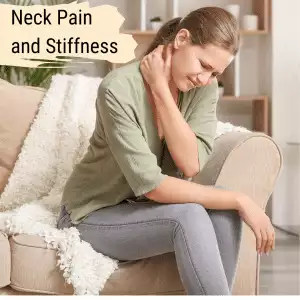
Neck pain? Stiff neck? These could be signs of cervical radiculopathy caused by a pinched nerve in neck. Acupuncture and TCM can provide neck pain relief and address the underlying causes of cervical radiculopathy.
Cervical radiculopathy occurs when a nerve in the neck becomes compressed or irritated where it branches away from the spinal cord. This is often referred to as a “pinched nerve.” This condition can lead to neck pain, weakness, and other symptoms not only in the neck but radiating into the arms and hands as well.
Cervical radiculopathy can be caused by several different factors, most of which involve some form of nerve compression in the neck.
One of the most common causes is a herniated disc, also known as a slipped disc in neck, or bulging disc in neck. This happens when the gel-like center of a spinal disc pushes out through a crack in the tougher exterior, putting pressure on a nearby nerve root. This can happen due to injury or degeneration over time.
Cervical spondylosis, also known as neck arthritis or cervical osteoarthritis, is a common age-related condition that affects the joints and discs in your neck. As the discs and cartilage between the cervical vertebrae wear down, this can cause neck pain and stiffness.
Degenerative disc disease and osteoarthritis are also common causes of a pinched nerve in neck. As we age, the spinal discs lose water content and shrink, leading to decreased cushioning between the vertebrae. This can cause the bones to rub against each other and lead to the formation of bone spurs, which can press on nerves and cause radiculopathy.
Another potential cause is spinal stenosis, which is the narrowing of the spaces within the spine. Lumbar spinal stenosis can result from a variety of factors, including thickened ligaments or overgrown bones, and leads to pinching or compression of the nerve roots as they exit the spinal column.
Additionally, trauma or injury to the neck, such as from car accidents or sports injuries, can directly damage the vertebrae or discs and result in a pinched nerve.
In more rare cases, tumors or infections in the spine may also cause cervical radiculopathy by compressing nerve roots.
Top 5 Symptoms of Cervical Radiculopathy
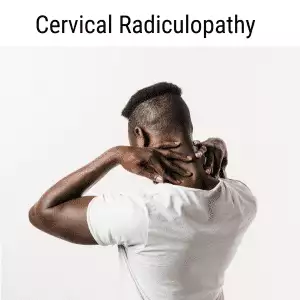
Pain in the neck and shoulders and headache are the most common symptoms associated with cervical radiculopathy. Poor reflexes and muscle weakness can also occur with a pinched nerve in the neck.
- Neck and shoulder pain – sharp or burning pain that starts in the neck and may radiate down the shoulder, arm, and hand
- Neck Stiffness – difficulty turning or moving the neck, neck muscle pain, muscle spasm in neck
- Numbness or Tingling in the shoulder, arms, or hands due to nerve compression.
- Muscle weakness in the arms or hands, trouble gripping or lifting objects.
- Neck pain and headache, headache that starts with neck pain
Diagnosis and Treatment for Cervical Radiculopathy
Diagnosing cervical radiculopathy can be challenging because its symptoms—such as neck pain, numbness, or tingling radiating down the arm—can overlap with other conditions like muscle strain, carpal tunnel syndrome, or even heart problems.
The complexity of nerve pathways makes it difficult to pinpoint the exact location and cause of nerve compression based on symptoms alone. The pain can vary in intensity, and some patients may not experience obvious arm symptoms, leading to confusion in initial assessments.
Western medicine typically relies on a combination of clinical evaluation and diagnostic imaging to confirm cervical radiculopathy.
During the clinical evaluation, a doctor will perform a physical examination, testing the strength, reflexes, and range of motion in the neck and arms. A Spurling’s test, where the head is turned and pressure is applied to the top of the head, may be used to reproduce symptoms and help localize the nerve root affected.
To confirm the diagnosis, imaging studies such as X-rays, CT scans, or MRIs are often used to visualize the spine and detect any structural issues, like herniated discs or bone spurs, that could be compressing the nerve roots. An electromyography (EMG) or nerve conduction study may also be performed to assess how well the nerves are functioning and to rule out other conditions affecting nerve function.
Conventional treatments for cervical radiculopathy, or treating a pinched nerve, generally focus on reducing pain, managing inflammation, and restoring normal function.
NSAID medications like ibuprofen or naproxen are usually recommended to reduce pain and inflammation around the pinched nerve. Corticosteroid injections may be used to reduce inflammation around the nerve root and offer temporary relief. Muscle relaxers may be prescribed to ease muscle spasms and reduce pressure on the pinched nerve.
Physical therapy exercises designed to improve neck mobility and strengthen supporting muscles, can potentially help relieve nerve compression. Using cervical traction devices to gently stretch the neck and reduce pressure on the affected nerve may be helpful in some cases.
In severe cases where non-surgical treatments don’t work, surgical options may be recommended to relieve pressure on the nerve by removing or repairing the affected disc or vertebra.
Acupuncture can be an effective modality for treating neck pain and stiffness due to cervical radiculopathy, without the unwanted side effects of taking pain medications and muscle relaxants.
Can Acupuncture Help Cervical Radiculopathy?

Acupuncture offers an alternative for patients suffering from neck pain who want to avoid surgery and the side effects of medication. Acupuncture treatment stimulates the body’s natural healing processes and alleviates pain by influencing the nervous system, reducing inflammation, and improving blood circulation to affected areas.
Acupuncture functions in multiple ways to help relieve nerve compression pain. It can help reduce swelling, or edema, that contribute to nerve compression. It also helps to relax muscle spasms. Acupuncture helps to increase blood flow to nerve roots.
Studies have shown that acupuncture can yield favorable outcomes, often comparable to conventional drug therapies. For instance, one randomized clinical trial found that acupuncture provided similar pain relief to drug therapy, making it a viable, safer alternative for pain management in cervical radiculopathy patients.
Additionally, some research has demonstrated the benefits of combining acupuncture with other conservative treatments, like cervical manipulations, to enhance therapeutic outcomes. In clinical trials, this combination has proven effective in reducing pain and improving mobility.
Acupuncture, used to complement other modalities, can be used as a valuable tool in the management of cervical radiculopathy, offering an effective, low-risk option to relieve pain and restore better mobility.
One case study of a patient with a C6/7 disc prolapse and radiculopathy showed that over a course of six acupuncture sessions administered within four weeks, significant improvements were observed in both pain and range of motion. Pain levels dropped from 8/10 to 2/10.
Acupuncture Near Me for Cervical Radiculopathy in West L.A.
At Art of Wellness Acupuncture and TCM in West Los Angeles, we have over 35 years of experience helping people find relief from all types of pain conditions related to nerve compression and neck pain, including herniated disks, spinal stenosis, cervical spondylosis, and cervical radiculopathy. Dr. Tan and Dr. Cai provide specialized care for each individual patient, including herbal remedies, therapeutic Chinese massage, and electroacupuncture to help relieve pain.
*This article is for education from the perspective of Traditional Chinese Medicine only. The education provided by this article is not approved by FDA to diagnose, prevent, treat and cure human diseases. It should not stop you from consulting with your physician for your medical conditions. Traditional Chinese Medicine is based on Qi, which is an invisible force that usually cannot be observed by modern science. Because science focuses on testing ideas about the natural world with evidence obtained through observation, these aspects of acupuncture can’t be studied by science. Therefore acupuncture and Chinese herbs are often not supported by double-blind, randomized trials, and they are considered alternative medicine therapies in the United States.
How To Treat Frozen Shoulder With Acupuncture and TCM
By Qineng Tan, L.Ac., Ph.D. and Xiaomei Cai, L.Ac., Ph.D.
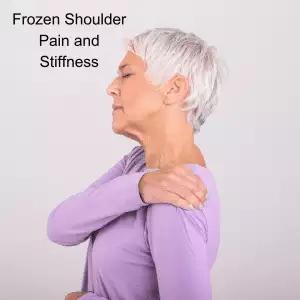
Can’t lift arm up? Front shoulder pain? Shoulders hurt when sleeping? Shoulder pain that doesn’t go away can be due to “frozen shoulder” and adhesive capsulitis. Acupuncture and TCM offer treatment for adhesive capsulitis frozen shoulder.
What Is Frozen Shoulder? Understanding Shoulder Pain and Adhesive Capsulitis
Frozen shoulder, medically known as adhesive capsulitis, is a painful condition that limits the range of motion in the shoulder. Over time, the shoulder joint can become stiff and difficult to move, leading to a significant loss of mobility.
Frozen shoulder typically progresses through three stages:
- Freezing – pain becomes gradually more intense, and range of motion decreases, sometimes until the arm is immobile – can last 6 weeks up to 9 months
- Frozen – pain may lessen, but the shoulder joint is still stiff and very difficult to move – can last 4-6 months
- Thawing – movement and strength is slowly regained – typically lasts anywhere between 6 months to 2 years
While frozen shoulder may be considered resolved when the pain has improved and basic functionality returns, many people continue to feel some stiffness and pain for many years.
What Causes Frozen Shoulder?
The shoulder is a ball-and-socket joint made up of three bones:
- The humerus (upper arm bone)
- The scapula (shoulder blade)
- The clavicle (collarbone)
The ball of the upper arm bone fits into a shallow socket in the shoulder blade, and this joint is surrounded by a thick capsule of connective tissue called the shoulder capsule. To help the shoulder move smoothly, synovial fluid lubricates the joint.
In cases of frozen shoulder, this capsule thickens and becomes stiff, with the development of adhesions or scar tissue, reducing the fluid in the joint. This usually leads to significant pain and often severely limited movement in the shoulder.
What Are the Risk Factors for Adhesive Capsulitis of the Shoulder?
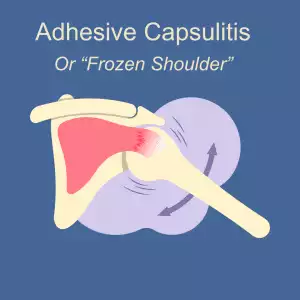
Frozen shoulder primarily affects adults, especially those between 40 and 60 years old, and it occurs more often in women than men. It is particularly common in women experiencing perimenopause and menopause, likely due to hormonal changes that can contribute to joint and connective tissue issues.
Certain medical conditions increase the likelihood of developing frozen shoulder. For example,
people with diabetes are at a higher risk for frozen shoulder, and they often experience more severe stiffness and longer recovery times.
Both hypothyroidism and hyperthyroidism are associated with an increased risk of frozen shoulder.
Immobilization of the shoulder following surgery or injury can also trigger the onset of frozen shoulder, especially if movement is restricted for long periods.
Many people wake up with a sore shoulder from sleeping in a way that restricts movement. Shoulder discomfort or front shoulder pain can happen due to sleeping positions that put pressure on the sensitive shoulder joint.
Frozen shoulder can also cause discomfort on one side, leading to reports of sore right shoulder or ache in left shoulder depending on which shoulder is affected.
Treatment for Frozen Shoulder/Adhesive Capsulitis
A doctor will typically diagnose frozen shoulder after an examination to determine passive range of motion and active range of motion in your shoulder. They may choose to order X-rays to rule out other problems.
In most cases, using hot and cold therapy with compresses and icing may be recommended, as well as pain medications/anti-inflammatories like Ibuprofen. If pain continues to be severe, a physician may offer steroid injections (corticosteroids).
Patients may be referred for physical therapy or massage to help with stretching and improving range of motion.
If pain and immobility persists past a year, surgery may be recommended. A “capsular release” procedure involves making small incisions in the tissues of the shoulder capsule. Manipulation and massage, while a person is anesthetized, can also help loosen up the tissues to allow for more mobility.
Acupuncture treatment can help relieve pain and improve mobility for frozen shoulder treatment without negative side effects that can come from the ongoing use of OTC pain medication and cortisone shots/corticosteroids, so it may be considered as an adjunct or alternative treatment for adhesive capsulitis.
Can Acupuncture Help Frozen Shoulder?
The TCM Chinese term for “frozen shoulder” translates into English as “shoulder at the age of 50 years.” Clearly, people in their middle age have been experiencing this pain and limitation in the shoulder joint for centuries. TCM has developed ways of helping to improve this condition.
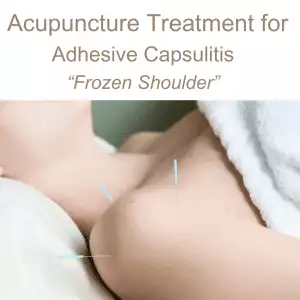
According to TCM theory, frozen shoulder may fall under the category of “Bi Syndromes.” “Bi” refers to an obstruction of some sort, and Bi Syndromes typically cause pain and stiffness in a part of the body, due to a blockage of the flow of Qi (life force energy).
In TCM, “wind,” “damp,” and “cold” are considered pathogenic forces that can settle in an area of the body and cause blood and Qi to stagnate. This can cause stiffness, lack of movements, tenderness, swelling, and pain in that area. Most types of arthritis, for example, are considered Bi Syndromes.
Conventional medicine tends to treat each person presenting with a condition with the same types of treatments and waits to see if they work. In TCM, there is an understanding that different people can have the same symptoms, and yet have different underlying problems that are causing pain and other symptoms.
Different people may experience pain and stiffness due to different factors. One person may have a stiff, sore shoulder due to an invasion of cold or damp, while another person may show signs of heat or wind. In other words, the very specific presentation of symptoms can help the acupuncture practitioner to determine the underlying causes of the condition and treat them accordingly, with acupuncture and herbal remedies.
The stimulation of specific acupoints can help bring more blood flow to the shoulder joint, so that more nourishment can help reduce inflammation. Electroacupuncture, in particular, can help activate the release of endorphins that reduce pain.
A review of 13 controlled studies of the usage of acupuncture treatment for frozen shoulder determined that it is a good modality for both reducing pain and restoring proper shoulder function.
A randomized, single blind controlled trial looked at 35 patients with frozen shoulder symptoms. Some of the patients were assigned to a group that would engage in physical therapy sessions twice per week, practice exercises at home daily, and not use any pain medications, except in “emergency” situations.
The other group also engaged in physical therapy and exercise, plus they also were given acupuncture treatment twice per week, with functional movement exercises being performed during the acupuncture session.
After six weeks of treatment, patients who had only had PT showed an average 39.8% improvement, while the PT plus acupuncture patients showed an average 76.4% improvement.
One recorded case study detailed that, after 24 acupuncture treatments, a patient regained full range of motion in their shoulder and reported that pain was entirely gone.
Acupuncture for Frozen Shoulder Near Me in West L.A. and Santa Monica
At Art of Wellness Acupuncture in West Los Angeles, we have over 35 years of experience helping patients find relief from joint pain of all kinds. Dr. Tan is a specialist in treating orthopedic pain. We successfully treat joint pain conditions like frozen shoulder, osteoarthritis of the knee, tennis elbow, bone spurs, bursitis/hip pain, gout, and more. If you are suffering from a lack of mobility and pain in shoulder, please consider visiting our acupuncture office in Los Angeles for a consultation.
*This article is for education from the perspective of Traditional Chinese Medicine only. The education provided by this article is not approved by FDA to diagnose, prevent, treat and cure human diseases. It should not stop you from consulting with your physician for your medical conditions. Traditional Chinese Medicine is based on Qi, which is an invisible force that usually cannot be observed by modern science. Because science focuses on testing ideas about the natural world with evidence obtained through observation, these aspects of acupuncture can’t be studied by science. Therefore acupuncture and Chinese herbs are often not supported by double-blind, randomized trials, and they are considered alternative medicine therapies in the United States.
How to Treat Pelvic Congestion Syndrome With Acupuncture and TCM
By Xiaomei Cai, L.Ac., Ph.D. and Qineng Tan, L.Ac., Ph.D.
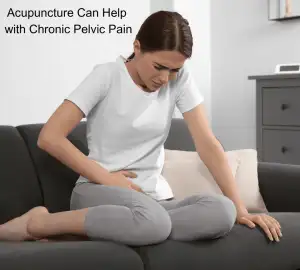
Pelvic pain that gets worse after standing for a long time? Urinary pain and urgency? Lower back pain and sciatica? Bloated stomach after eating? These can all be symptoms of pelvic congestion syndrome (PCS), or vaginal varicose veins. Acupuncture and TCM offer an alternative treatment for pelvic congestion syndrome.
What is Pelvic Congestion Syndrome (PCS)?
Pelvic Congestion Syndrome (PCS) is a chronic condition caused by varicose veins in the pelvis—similar to varicose veins that commonly occur in the legs. These dilated veins in the pelvis can cause severe pelvic pain, particularly a feeling of heaviness or aching pain that worsens over the day. PCS pain can often get worse after standing for long periods.
Pelvic congestion is one of the most common causes of chronic pelvic pain, but PCS often goes undiagnosed because the symptoms can mimic other conditions, such as:
- Endometriosis
- uterine fibroids/leiomyoma of the uterus
- bladder pain/interstitial cystitis
- ovarian cysts
- Generalized back pain, lower back pain, hip pain, or groin pain
All of these conditions can cause chronic pain in the pelvic area.
In Pelvic Congestion Syndrome, dilated veins around the ovaries and the vulvovaginal can happen due to venous obstruction, problems with valves in the blood vessels, and/or changes in hormone levels.
PCS does not only affect women. Men can also suffer from pelvic congestion syndrome and experience chronic pelvic pain.
Pelvic pain conditions related to vascular issues and blood flow are complicated. Most health conditions related to pelvic pain in relation to reproductive organs, and in particular CPS, are still not very well understood by modern medicine.
TCM offers a holistic approach to reproductive healthcare. Acupuncture treatment can help address the many factors involved in pelvic congestion syndrome.
Top 10 Pelvic Congestion Syndrome Symptoms
PCS symptoms can vary from patient to patient, but the most common signs of PCS include:
- Pelvic pain that gets worse as the day goes on. Discomfort tends to accumulate as the day progresses due to the pooling of blood in the pelvic veins, leading to increased pressure.
- Pelvic pain that worsens when standing for long periods. Many women report that standing for extended periods increases the feeling of pressure and pain in the pelvic region.
- Pelvic pain after eating, abdominal pain after meals. Eating can trigger pain and bloating, making meals uncomfortable.
- Urinary incontinence, an inability to control urination, especially when coughing or lifting something heavy.
- Painful urination (urinary pain),burning during urination, often confused with a UTI (urinary tract infection).
- Urinary urgency, sudden need to urinate, sudden, intense urge to urinate, which can feel similar to bladder conditions.
- IBS symptoms, alternating constipation and diarrhea, bloating, and abdominal pain.
- Lower back pain, radiating pain in the lower back, often mistaken for sciatica or musculoskeletal problems.
- Throbbing in the legs, achy legs after standing for a long time, poor circulation in the lower extremities, causing aching, swelling, and throbbing in the legs.
- Painful intercourse (dyspareunia), pain during or after sex due to the increased pressure and swelling of the pelvic veins.
What Does Pelvic Congestion Pain Feel Like?
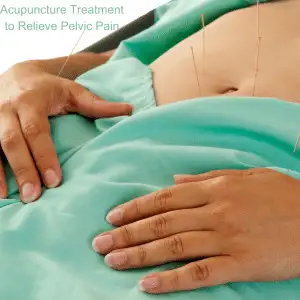
Pelvic Congestion Syndrome (PCS) and Chronic Pelvic Pain Syndrome (CPPS) are two conditions that cause debilitating pain in the pelvic region, yet they are distinct in the way they present.
Pelvic Congestion Syndrome (PCS) is primarily caused by varicose veins in the pelvis, leading to blood pooling in the veins and creating chronic pelvic pain, particularly in women of childbearing age. PCS pain tends to worsen after long periods of standing, physical activity, or after sexual intercourse.
PCS is often associated with hormonal changes and pregnancy, but it is also underdiagnosed because the symptoms can overlap with other pelvic disorders besides pregnancy.
Diagnostic tools like Doppler ultrasound or venography are often needed to identify the underlying venous issues, which may be treated with hormone therapy, vein embolization, or surgery.
Medications that suppress estrogen may be prescribed to help relieve symptoms. These include Depo-Provera, Implanon, or Goserelin. These are all drugs that also prevent pregnancy, so they are not helpful for people who may be hoping to get pregnant, or who want or need to avoid taking hormonal birth control for whatever reason.
Ovarian vein embolization is a procedure that blocks or ties off veins so that blood isn’t flowing or pooling in areas of the pelvis.
Acupuncture offers an natural treatment for pelvic congestion syndrome, without side effects of hormonal birth control.
Can Acupuncture Help Pelvic Congestion Syndrome?

Traditional Chinese Medicine (TCM), particularly acupuncture, can be an effective modality for treating conditions like Pelvic Congestion Syndrome (PCS) and Chronic Pelvic Pain Syndrome (CPPS).
Acupuncture has been widely adopted in both Eastern and Western countries for managing pain syndromes. The central mechanism behind acupuncture’s effectiveness in these cases is its ability to stimulate specific acupoints, improving local blood circulation and reducing inflammation, which ultimately helps in alleviating pain.
The muscles and fascia inside the pelvis play a crucial role in maintaining the stability of the pelvis and spine. The fascia in the pelvis can be compromised by trauma, postural stress, pregnancy, anxiety, and other subtle factors.
This is one of the reasons the pelvic pain and congestion can be difficult for conventional medicine to address properly. Visceral pain in the pelvic may not be easily “visible,” as it can be caused by microtraumas, adhesions, scar tissue, and pain referring from one area to another.
Acupuncture treatment can help relieve this type of pain, as placing needles in acupoints has an analgesic, as well as a calming, effect.
Research has demonstrated that acupuncture can release certain neurochemicals like adenosine, which exerts an analgesic effect during stimulation of acupoints, offering relief from pain in conditions like CPPS. This mechanism helps reduce inflammation and regulate pain by influencing inflammatory mediators, which play a significant role in chronic pelvic pain disorders.
Clinical trials have specifically shown that acupuncture improves symptoms in both men and women suffering from CPPS, with better outcomes than placebo or sham treatments.
One study looked at male patients with pelvic pain and venous congestion. After five weekly sessions of acupuncture treatment, patients reported significant reduction in pain, and MR venography showed reduction in intrapelvic venous congestion.
Specific formulations of Chinese herbs have been developed to help address the root cause of pelvic congestion, while also relieving painful symptoms.
Acupuncture’s ability to relieve pain through modulation of inflammatory processes makes it an excellent alternative or complementary therapy for chronic pelvic pain conditions.
Acupuncture Near Me for PCS in West LA
At Art of Wellness Acupuncture and TCM in Santa Monica, we have over 35 years of experience helping people with all kinds of chronic pain conditions. We offer highly specialized care for people experiencing reproductive issues, pregnancy, pelvic pain, referred back pain, lower back pain, hip pain, and groin pain. Our team of practitioners spend time with each patient to provide holistic care that takes the whole person into account: physical, mental, and emotional. If you or someone you know is experiencing chronic pelvic pain, please do not hesitate to reach out to us.
*This article is for education from the perspective of Traditional Chinese Medicine only. The education provided by this article is not approved by FDA to diagnose, prevent, treat and cure human diseases. It should not stop you from consulting with your physician for your medical conditions. Traditional Chinese Medicine is based on Qi, which is an invisible force that usually cannot be observed by modern science. Because science focuses on testing ideas about the natural world with evidence obtained through observation, these aspects of acupuncture can’t be studied by science. Therefore acupuncture and Chinese herbs are often not supported by double-blind, randomized trials, and they are considered alternative medicine therapies in the United States.
How to Treat Edema With Acupuncture and TCM
By Qineng Tan, L.Ac., Ph.D. and Xiaomei Cai, L.Ac., Ph.D.

Swollen feet and ankles? Fluid retention in legs? These are signs of edema. Acupuncture and TCM offer natural diuretic herbs and alternative treatment for swelling in legs and feet.
Edema refers to when excess fluid in body tissues, or water retention, leads to swelling. Edema most commonly causes swollen ankles and swollen feet. But edema can occur in many parts of the body.
Blood vessels have tiny valves that work to push blood from the lower body back up to the heart. When this process isn’t working properly, blood and other fluids will gather in the legs and cause swollen feet and ankles.
Edema causes puffiness under the skin, and when you press on the skin, it leaves an imprint. The skin may be shiny and stretched because of water retention.
Other edema symptoms can include a feeling of heaviness in the legs, and a swollen belly or distended abdomen.
Everyone experiences edema once in a while; for example, after a long airplane flight, which causes fluids to pool in the legs and feet, or the day after eating particularly salty foods, which can cause water retention. Edema is also common during pregnancy, when increased blood volume and pressure from the growing uterus can cause edema in the legs.
Occasional edema can often be prevented or remedied by reducing salt intake, drinking more water, and wearing compression garments.
Some health conditions can cause edema, in which case, both the underlying issue and the edema itself need to be addressed.
Acupuncture and Chinese herbs can help relieve swollen ankles and feet due to water retention, as well as helping to address the root cause of edema.
Causes of Edema
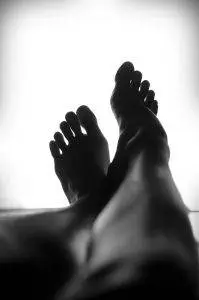
Edema can happen when a person stays in one position for a long time and fluids build up in the lower body due to gravity. This type of swelling can be helped by getting up and moving around regularly and/or wearing compression socks that prevent water retention from causing swollen ankles and feet.
Cardiovascular issues having to do with heart function or the health of blood vessels can cause edema. When the heart doesn’t pump blood effectively, it can cause fluid buildup in the legs, ankles, and feet. Venous insufficiency, or weakness in the veins, can prevent blood from being pushed back to the heart properly, which leads to varicose veins and blood buildup in the legs.
Kidney disease and liver disease can contribute to edema. Damaged kidneys are less able to remove excess fluid, leading to swelling. Conditions like cirrhosis can increase pressure in blood vessels and reduce proteins that keep fluid in the bloodstream, causing edema.
Blocked or damaged lymph nodes can prevent lymph fluid from draining well, causing localized edema. This is known as lymphedema. Lymphedema can be related to cancer treatments, when lymph nodes are removed.
People may experience edema after a stroke or cardiac event like a heart attack.
Side effects from some drugs, including those for high blood pressure and corticosteroids, can cause fluid retention.
Conditions such as cellulitis or arthritis can cause inflammation and localized swelling.
When there are underlying conditions like cirrhosis, kidney problems, and vascular issues, they must be addressed in order to resolve the edema.
Treatment for Swollen Legs and Feet
Conventional medical treatments for edema typically focus on addressing the underlying cause and managing symptoms. Typical medical treatment for edema may include:
- Diuretics to help the body expel excess fluid through urine.
- Compression stockings to help reduce swelling by promoting fluid movement in the legs.
- Elevating the affected limbs above the level of the heart can help reduce swelling.
- Lowering sodium in the diet can help prevent fluid retention.
- Regular exercise to improve circulation and help reduce swelling.
- Addressing heart, kidney, or liver issues can help manage edema.
Using diuretic medications may seem to alleviate swelling in the short term, but these drugs create a kind of dependency. As soon as a person stops taking the diuretics, the water retention will return.
Chinese herbal formulations can act as natural diuretics, while addressing the root cause of edema.
By integrating acupuncture and TCM into your treatment plan, you may find a holistic approach that addresses not only the symptoms of edema but also its cause, providing lasting relief from edema swelling.
Can Acupuncture Help Edema?
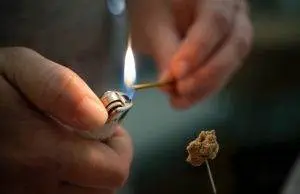
TCM theory for the treatment of edema goes back over 2000 years. The Yellow Emperor wrote about edema treatment in his medical text before 100 B.C., describing the disruption of fluid movement in the body. In the second century A.D., another well-known Chinese doctor Zhang Zhong-Jing detailed treatments for edema with herb formulas, which are still considered classics today.
Edema can be related to imbalances in Yin and Yang. Yin edema affects the spleen and kidneys, while Yang edema affects the spleen and lungs. Yin edema symptoms tend to start in the lower body, with swollen feet and ankles, while Yang edema symptoms tend to start in the upper body, with the tendency to have tight, shiny skin.
According to TCM, the organ systems of the Spleen, Kidneys, and Lungs must be balanced in order to restore proper functioning of fluid metabolism. An acupuncture treatment protocol would be directed towards clearing wind, heat, dampness, and other pathogenic forces, while balancing Yin and Yang, and regulating Qi and Blood.
Different pathologies of edema can be described by TCM diagnoses, including:
- Blood stasis
- Qi stagnation
- Damp heat
- Heat toxins
- Wind-cold or Wind-heat in the lungs
Recent research shows that ancient herb formulas can help regulate fluids and have a positive effect on vascular function.
Moxibustion, a TCM modality that involves warming acupoint areas by burning mugwort herb near the skin, is often used to help relieve edema. Moxa treatment can help improve blood flow by warming and dispersing dampness and phlegm and invigorating the spleen and kidneys.
One study of patients suffering from swelling in legs and ankles showed that moxibustion helped relieve swelling in the legs.
Breast cancer treatment often involves radiation treatment that affects the lymph nodes, or the removal of lymph nodes, which can lead to lymphedema. This type of lymphedema often affects one arm, or both arms. It can also affect other parts of the body.
One study involved using acupuncture treatment twice a week to help relieve lymphedema after cancer treatment. More than half of the patients experienced a significant improvement in lymphedema, as measured by arm circumference. The conclusion was that acupuncture is a safe treatment that can help reduce swelling.
Acupuncture treatment improves blood flow and the movement of fluids in general, while nourishing the kidneys and spleen. Moxibustion can be used to further stimulate the flow of blood and Qi.
Acupuncture Near Me for Edema in West Los Angeles
Edema is a common problem, but it requires an individualized approach, as it can have many different root causes. Experienced acupuncture practitioners like Dr. Tan and Dr. Cai at Art of Wellness in Westwood, CA can help patients find relief from edema swelling and water retention in legs through a combination of acupuncture, moxa, herbs, and personalized nutrition counseling.
*This article is for education from the perspective of Traditional Chinese Medicine only. The education provided by this article is not approved by FDA to diagnose, prevent, treat and cure human diseases. It should not stop you from consulting with your physician for your medical conditions. Traditional Chinese Medicine is based on Qi, which is an invisible force that usually cannot be observed by modern science. Because science focuses on testing ideas about the natural world with evidence obtained through observation, these aspects of acupuncture can’t be studied by science. Therefore acupuncture and Chinese herbs are often not supported by double-blind, randomized trials, and they are considered alternative medicine therapies in the United States.
How to Treat Cirrhosis With Acupuncture and TCM
By Qineng Tan, L.Ac., Ph.D. and Xiaomei Cai, L.Ac., Ph.D.
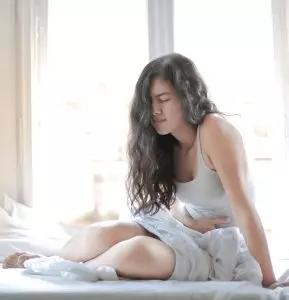
Tired all the time? Upper right abdominal pain? Itchy skin? Muscle cramps? These can be cirrhosis of the liver symptoms. Acupuncture and TCM can help relieve liver pain due to cirrhosis and help to improve liver function.
Cirrhosis of the liver is a serious and progressive condition characterized by the scarring of liver tissue, which can lead to liver failure over time. This condition can be caused by various factors, like chronic viral hepatitis infections, primary biliary cirrhosis, and long-term alcohol overuse (alcoholic cirrhosis).
Other conditions that cause cirrhosis include: cystic fibrosis, autoimmune hepatitis, non-alcoholic fatty liver disease, hemochromatosis (iron buildup), and primary biliary cholangitis (hardening of the bile ducts).
The liver is a vital organ responsible for detoxifying harmful substances from the body, producing bile to aid in digestion, and storing nutrients. When cirrhosis of the liver occurs, these functions are significantly impaired, which can lead to a wide range of health problems.
Cirrhosis of the liver symptoms can vary depending on the severity and progression of the disease. Many people have liver cirrhosis without realizing it, as it is possible to have cirrhosis for years without being symptomatic.
Top 10 Symptoms of Cirrhosis of the Liver
Cirrhosis symptoms include:
- Bruise easily, bleed easily
- Nausea
- Fatigue, drowsiness
- Lack of appetite
- Itchy skin, pruritus
- Edema in legs, edema in ankles, edema in feet
- Jaundice – yellow eyes, yellow skin
- Spider veins
- Pale fingernails, clubbed fingers, red palms
- Cognitive difficulties, slurred speech
Cirrhosis can affect menstruation, causing irregular periods or no period, and cause female infertility. Cirrhosis can also affect sexual function (erectile dysfunction/ED), libido and male fertility.
In its early stages, cirrhosis may present with mild or no symptoms, making it challenging to diagnose without medical testing.
An enlarged spleen can be a symptom of liver cirrhosis.
As the condition advances, cirrhosis symptoms will usually worsen, signaling the need for intervention.
4 Stages of Liver Disease
It is important to recognize the stages of cirrhosis of the liver. Early intervention can help slow down the progression of liver disease.
- Stage I: Steatosis (Fatty Liver) – The first stage involves inflammation of the bile duct or liver. Abdominal pain is often the first sign. If not treated, the inflammation can damage the liver. Symptoms and inflammation are usually treatable at this stage, preventing progression to stage II.
- Stage II: Fibrosis (Liver Scarring) – Many people don’t notice symptoms until stage II or III. In this stage, scarring begins to block the normal blood flow in the liver. The liver doesn’t function properly, but with treatment, it can still recover and slow down the disease.
- Stage III: Cirrhosis – Cirrhosis occurs when scar tissue replaces healthy liver tissue. This happens over several years due to untreated disease or infection. The liver becomes hard and lumpy, making it difficult for blood to flow through it. The blocked blood flow can also affect the spleen, causing additional issues.
- Stage IV: Liver Failure – At this final stage, the liver stops functioning. Immediate medical intervention is needed to prevent fatal outcomes.
Early diagnosis and treatment for cirrhosis are crucial to prevent further liver damage and manage cirrhosis effectively. Acupuncture and TCM offer an alternative treatment for cirrhosis to help restore liver function.
Medical Treatment for Liver Cirrhosis
Cirrhosis treatment focuses on slowing the progression of the disease, managing liver cirrhosis symptoms, and preventing complications. The specific approach can vary depending on the underlying cause of cirrhosis, such as hepatitis, alcoholic liver disease, or nonalcoholic fatty liver disease.
Common conventional treatments and strategies used to manage liver cirrhosis include medications to reduce inflammation and manage symptoms.
For cirrhosis caused by chronic hepatitis B or C, antiviral medications can help reduce liver inflammation and prevent further liver damage.
Diuretics are often prescribed to reduce fluid retention and swelling (edema) in the legs and abdomen (ascites). Paracentesis is a procedure that drains excess fluid from the abdomen in cases of severe ascites.
Beta-blockers decrease the risk of bleeding from esophageal varices (enlarged veins in the esophagus) by lowering blood pressure in the portal vein.

Frequent blood tests, imaging studies (such as ultrasounds), and endoscopies to monitor liver function and detect complications early.
In cases where cirrhosis progresses to end-stage liver disease and liver function is severely compromised, a liver transplant is sometimes the only option. This involves replacing the damaged liver with a healthy one from a donor.
For alcoholic cirrhosis, abstaining from alcohol is crucial. Medical support, counseling, and rehabilitation programs can aid in alcohol cessation.
Lifestyle modifications, including a healthy diet, weight loss, and regular exercise, are essential for patients with nonalcoholic fatty liver disease (NAFLD) related cirrhosis. Eating a balanced diet low in sodium to reduce fluid retention and avoiding alcohol and substances that can further harm the liver.
By combining these treatments, healthcare providers aim to manage cirrhosis effectively, improve the quality of life, and extend the lifespan of individuals with this chronic condition. However, some of the medications recommended for cirrhosis, such as antiviral drugs and diuretics, can potentially cause harm to other organ systems and do not serve to address the deeper root causes of liver dysfunction. Acupuncture and TCM offer a holistic treatment for cirrhosis that takes the whole body into account.
Can Acupuncture Help Cirrhosis?
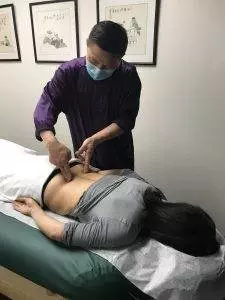
According to TCM theory, the liver is responsible not only for removing toxins from the bloodstream and body; it also disperses nutrients and medicinal substances throughout the body.
In modern life, people’s livers have to work much harder to process all of the chemicals and other toxins to which we are exposed on a daily basis. When the liver is overtaxed, it cannot provide adequate energy and nutrition, and it may not be able to eliminate all of the toxins.
This buildup of chemicals and unhealthy “food” substances in the liver contributes to the formulation of scar tissue in the liver.
Symptoms such as nausea and vomiting, diarrhea, itchy skin or skin rashes indicate that the liver is trying to purge toxins. When the liver cannot expel enough of the toxins, they will begin to affect the kidneys, too.
Medical treatments that aim to get rid of rashes or other symptoms may help the person feel more comfortable, but they do not help the root cause of the problems in the liver; they only cover them up. The use of antiviral and antibiotic medications, likewise, may seem to be taking care of infections, but they are potentially causing further damage to the organs.
In TCM, internal pathogens like cold, damp, and stagnation affecting the organ systems contribute to disease. Liver disease is not only about the liver, but also the kidneys, heart, stomach, and spleen. Symptoms like stomach distension, edema in the legs and feet, varicose veins or spider veins, and jaundice occur because of deficiencies in the various organs.
An acupuncturist will listen and observe each individual’s symptoms carefully to see which organs are affected. The TCM treatment plan will then involve acupuncture treatment and herbs to help strengthen all of the organs (heart, kidney, spleen and stomach), not just the liver.
A review of 15 studies in China in which TCM was used to treat liver cirrhosis concluded that acupuncture is effective both as a primary treatment and an adjunct treatment for chronic liver disease, helping to relieve symptoms and improve liver function.
If acupuncture treatment is sought before there is too much liver damage, TCM can help slow the progression of the disease and reduce painful symptoms.
One study showed that four weeks of electro-acupuncture treatment helped to reduce muscle cramps in liver cirrhosis patients.
Acupuncture helps to treat the underlying conditions that cause cirrhosis, including hepatitis, and fatty liver disease.
Another study showed that patients who received acupuncture treatment in addition to conventional treatment for liver cirrhosis showed less liver fibrosis (scarring) and fewer gastrointestinal symptoms than patients who only received conventional treatment.
Most doctors will advise patients with liver disease to quit drinking and cut out certain foods. Acupuncturists have expertise in nutrition that allows them to give each patient personalized care when deciding what dietary changes need to be made. Acupuncture treatment can also be very helpful when people are ready to cut out alcohol and eat the right foods to help improve liver health.
Acupuncture Near Me for Cirrhosis in West Los Angeles
TCM has been used to help improve liver health for many centuries. Acupuncture and Chinese herbs can help address liver problems of all kinds. At Art of Wellness, we are able to help patients improve liver function and feel better through acupuncture, customized herbal formulas, and individualized nutritional counseling.
*This article is for education from the perspective of Traditional Chinese Medicine only. The education provided by this article is not approved by FDA to diagnose, prevent, treat and cure human diseases. It should not stop you from consulting with your physician for your medical conditions. Traditional Chinese Medicine is based on Qi, which is an invisible force that usually cannot be observed by modern science. Because science focuses on testing ideas about the natural world with evidence obtained through observation, these aspects of acupuncture can’t be studied by science. Therefore acupuncture and Chinese herbs are often not supported by double-blind, randomized trials, and they are considered alternative medicine therapies in the United States.